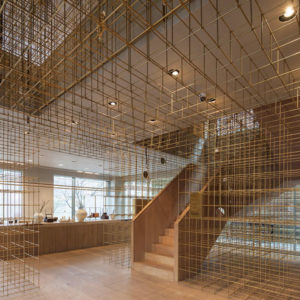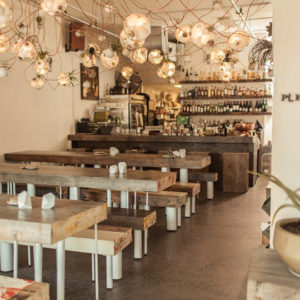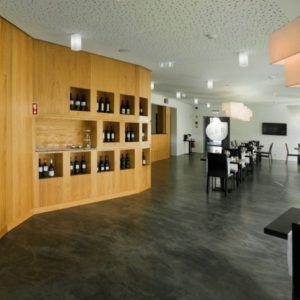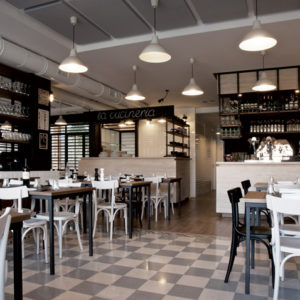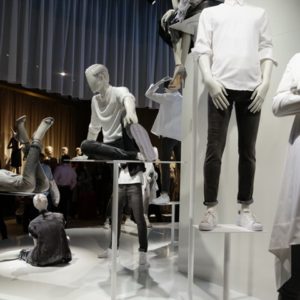
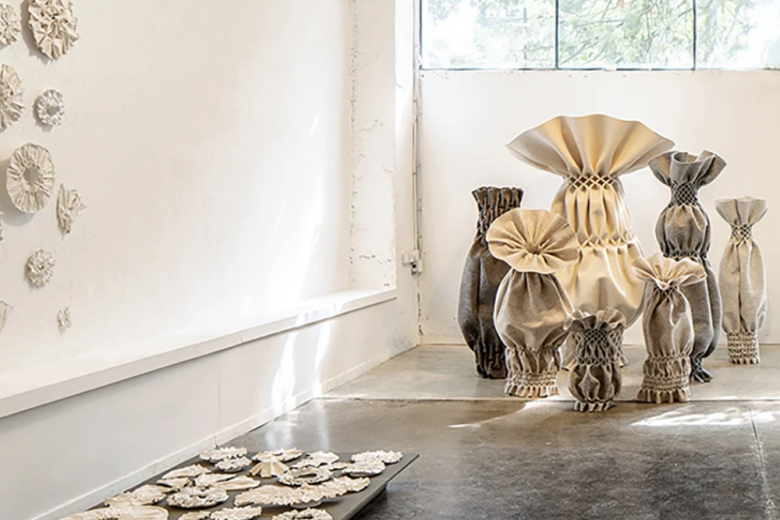
A fusion of tradition and the technology, Encoded Craft by Tamara Anna Efrat examines how handmade embroidery, once algorithmically encoded and manipulated, may be charged with critical contents to produce meaningful variations. With her new solo exhibition curated by Talia Janover, Efrat preserves and revives traditional handicrafts with the help of digital technologies of documentation, production, and design, to present a collection of textile crafts.
Through this, the work uncovers different stages of ecological processes of collapse and extinction, including that of marine species and local biosphere in different parts of the world. The exhibition’s first layer celebrates thriving organic processes with the help of mathematical patterns, while the second layer shows the organisms beginning to lose their vibrancy and complexity. Moving further ahead, the next layers depicts the embalmed fossils of these creatures as they have succumbed to the harmful effects of humanity.
The exhibition examines processing techniques for organic and synthetic textiles using contemporary tools and codes that give works new qualities and enhance existing attributes — such as structural strength, surface texture, or plasticity. In doing so, Tamara Anna Efrat dislocates them of their historical context and their original use and reloads them with relevant social, cultural, and aesthetic meaning.
The artist poses that in a world saturated with industrialized objects, there is a longing for manual, personal work, which treasures within it a story, a perspective, and traces of a process. As such she seeks to creatively preserve and revive traditional techniques by translating them into contemporary constructs and staging a tension between algorithmic processes and manual work.
With Encoded Craft, Efrat explores a damaged ecological entropy, including issues such as the acidification of the seas and the disappearance of corals, which is accelerated by the dualistic approach common in the Western world which assumes an existential conflict between man and nature. Pondering its different stages, the artist creates the exhibition’s first layer as a ‘living’ wall to depict organic processes in all their morphological and colorful glory. With the help of code, mathematical patterns have traced natural phenomena and fabricated artificial objects, with body and expression, that reverberate living organisms such as sea creatures, tropical flowers, invertebrates, amoeba and more.
On a perpendicular wall, the ‘living’ bodies lose their formal complexity and their intense colors and become clumsy, lumpy, oversized gray objects. The environmental setup and ecological image of the first wall is replaced by a sculptural one in which each object strives for autonomy and monumentality and competes with the other. Meanwhile, a parallel third wall displays fossils of the same organic creatures which are now ‘embalmed’ in time and offer themselves as archaeological traces of the ‘Age of Man’ (the Anthropocene). The embalming is done by dipping different fabrics in liquid clay and burning them in the oven, and also by producing a three-dimensional scan of the fabrics and then of the fired ceramics. These actions represent attempts to stop time for a moment in order to contemplate the morbid effect of industrialization and the ongoing death of manual craft.
The last wall features a large embroidery work based on scientific data collected from extreme ecological processes that have occurred around the world in the last century. The numerical data was translated and processed by a number of codes that Efrat developed especially for this purpose, creating a sort of coded bricolage and drawing a field of landmarks that were woven into a single work.
Designed by Tamara Anna Efrat
Images by Yoav Peled & Dan Perez
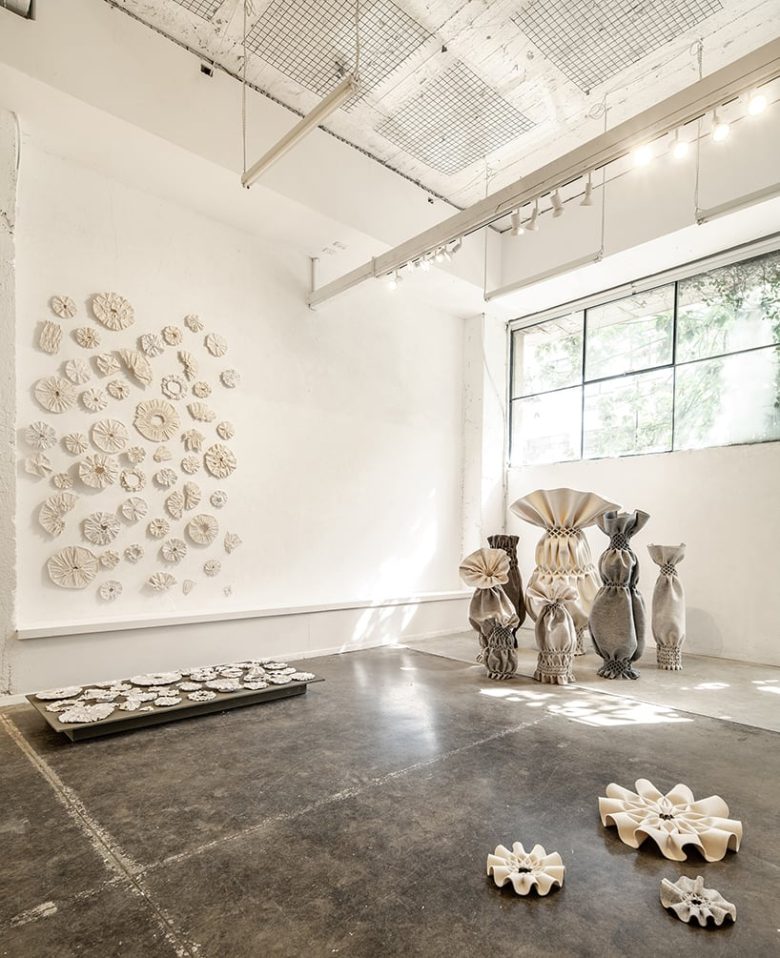
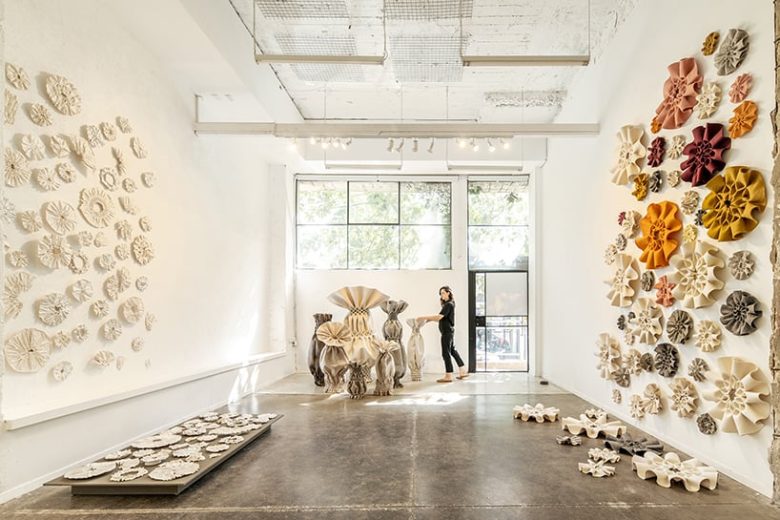
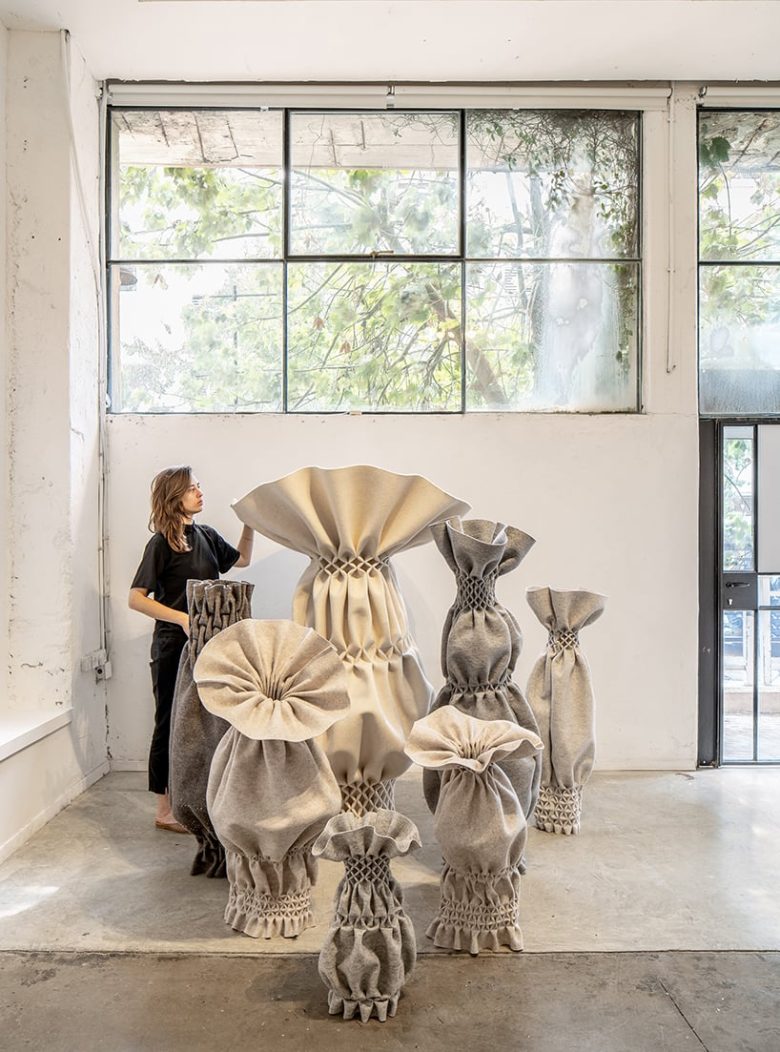




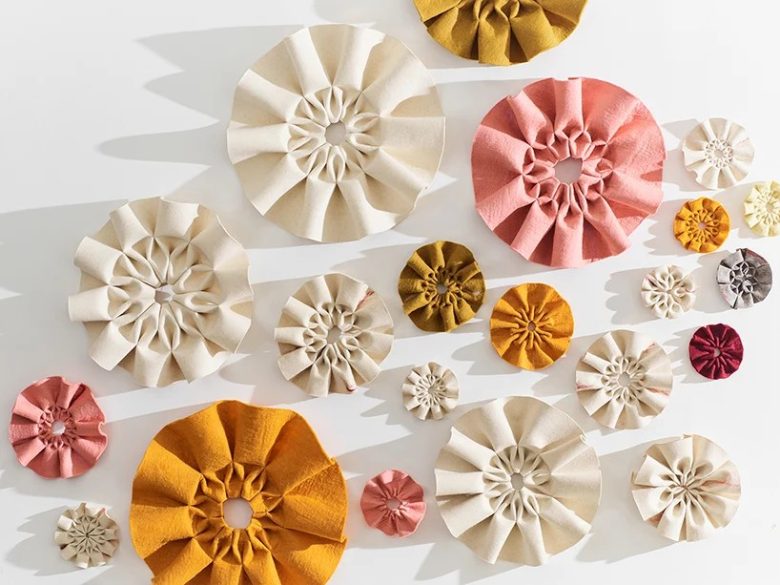

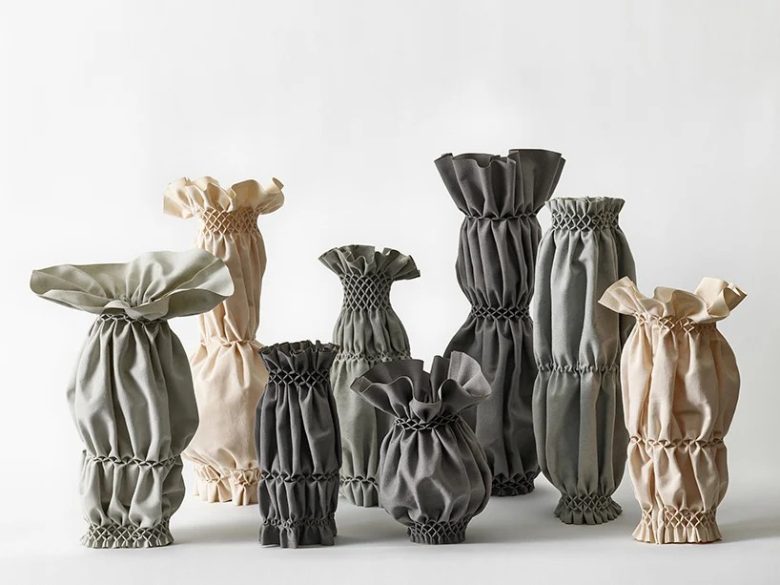
Add to collection


